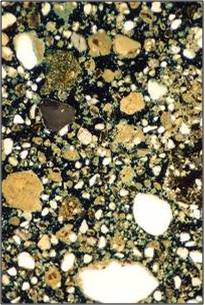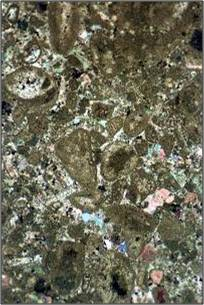Chemical Soil Stabilization

Loop 820: Jan 1991
ROADBOND EN 1™ patented soil stabilizer fundamentally alters the ability of clay to hold adsorbed water, which is water held by electrical attraction. ROADBOND EN 1™ stabilizer causes clay to release weakly ionized water molecules from the clay matrix and replaces the water with strongly ionized sulfate radicals. The exchange is permanent and takes place at normal pH levels.
As in lime stabilization, metal hydrates are formed which help increase the strength of the clay and by leaving the clay matrix intact, the permeability is significantly reduced.
When mixed with base material and compatible in-place material, ROADBOND EN 1™ stabilizer dissolves the mineral salts and natural cementitious properties of the soil. Mixing the soil disperses the dissolved material into the void spaces between the soil grains where it cures and crystallizes.
The re-crystallized mineral salts and natural cements form an effective bond that results in improved strength, load-bearing capacity and durability. The replacement of weakly ionized water molecules with strongly ionized sulfate radicals along with the increased dry density make the treated soil more resistant to water penetration. This reduces shrink-swell potential along with freeze-thaw damage.
Samples of treated and untreated soil were molded into cylinders and allowed to cure 21 days. After curing, thin cross sections (60 microns) of these cylinders were cut with a gem saw and mounted on slides. The thin sections were then magnified 60 times and photographed.


Microphotographs of the slides are shown above. The treated sample (on the right) is more dense than the untreated sample. The abundant pinks and greens in the treated sample are crystallized rock mineral and natural cements that have filled the void spaces and bonded the soil grains together.
The large dark areas of the untreated sample (on the left) are void spaces. These void spaces are weak adhesions between the soil grains that result in less strength and load-bearing capacity.
